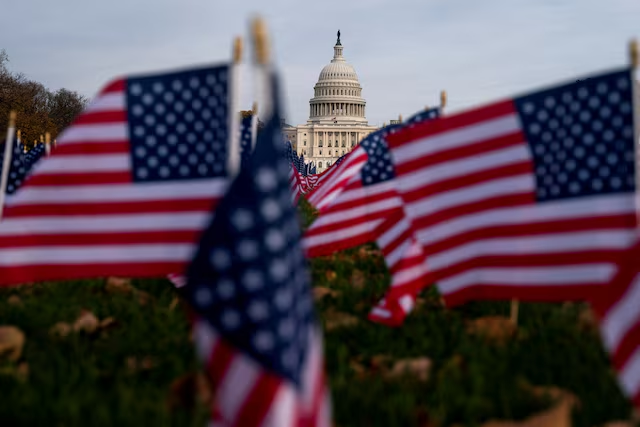News
U.S. Government Reopens After Record Shutdown, but Deep Political Divisions Persist
After the longest government shutdown in U.S. history, federal operations have resumed, ending weeks of flight disruptions, halted food aid, and unpaid workers. But the deep partisan rift that caused the crisis remains unresolved — raising fears of another shutdown ahead.

After the longest shutdown in U.S. history — one that disrupted air travel, cut food aid for low-income Americans, and left over a million federal employees without pay for more than a month — the U.S. government is finally set to reopen on Thursday.
Yet the deep political divides that sparked the 43-day standoff remain as entrenched as ever.
The new funding package offers little to prevent former Republican President Donald Trump from blocking spending in the future — a power he has often used to challenge Congress’s constitutional control over federal funds. Nor does it address the soon-to-expire healthcare subsidies that originally triggered Senate Democrats to initiate the shutdown.
The impasse has exposed sharp divisions within the Democratic Party itself — between progressives demanding a tougher stance against Trump and moderates who argue that their leverage is limited as long as Republicans hold both chambers of Congress. Senate Democratic Leader Chuck Schumer now faces calls to step down, even though he voted against the deal.
Polls show that Americans blame both parties almost equally. According to a Reuters/Ipsos survey released Wednesday, 50% hold Republicans responsible for the shutdown, while 47% blame Democrats — suggesting neither side emerged as a clear winner.
But the reprieve may be short-lived. The deal funds the government only until January 30, raising the risk of yet another shutdown early next year.
Historically, Republicans have been the ones to force funding lapses, but this time Democrats took the rare position of prolonging the standoff to defend healthcare subsidies and push back against Trump’s spending tactics.
Meanwhile, the broader debate over the $38 trillion national debt, growing by roughly $1.8 trillion annually, was conspicuously absent — despite its long-term economic implications.
Senate Democrats argued that the shutdown’s disruption to federal benefits and workers’ pay underscored the stakes for 24 million Americans facing potential hikes in healthcare costs.
“Healthcare for Americans is a fight worth having,” said Representative Hank Johnson of Georgia. “People understand what’s at stake — they want us to fight for them.”
Democrats received no guarantees on healthcare subsidies, only a promise that the Republican-controlled Senate would bring the issue to a vote — with no assurance it would pass. Still, they believe the debate has highlighted the rising cost of living, a potent issue that could politically backfire on Republicans if left unaddressed.
Even some moderate Republicans expressed frustration with the political brinkmanship.
“We should be legally barred from ever shutting down the government,” said GOP Representative Brian Fitzpatrick. “It’s madness to use a shutdown as a bargaining chip for policy gains.”
With the reopening, air travel and food benefits are slowly returning to normal. The U.S. air traffic system, which had faced massive flight cancellations due to high controller absenteeism, is stabilizing. Around 42 million Americans relying on SNAP food subsidies will receive their full benefits within 24 hours, according to the USDA.
The shutdown had forced hundreds of thousands of “essential” employees to work without pay, while others were furloughed entirely. Under a 2019 law, all affected workers are entitled to back pay — though Trump’s administration had threatened to withhold it for some.
Trump also attempted to use the standoff to lay off thousands of federal workers and target domestic programs favored by Democrats. The latest deal halts those plans — at least temporarily — keeping federal employees in their jobs until the end of January. Trump reportedly intends to cut 300,000 civil service positions by year’s end.
The closure also delayed key economic data releases, leaving investors and the Federal Reserve in the dark about the true state of the U.S. economy. The Congressional Budget Office (CBO) estimates the shutdown delayed nearly $50 billion in spending and shaved 1.5 percentage points off GDP growth, with about $14 billion in permanent economic losses.
Still, the CBO expects the economy to largely recover once normal operations resume — unless political gridlock leads to another shutdown in early 2026.
